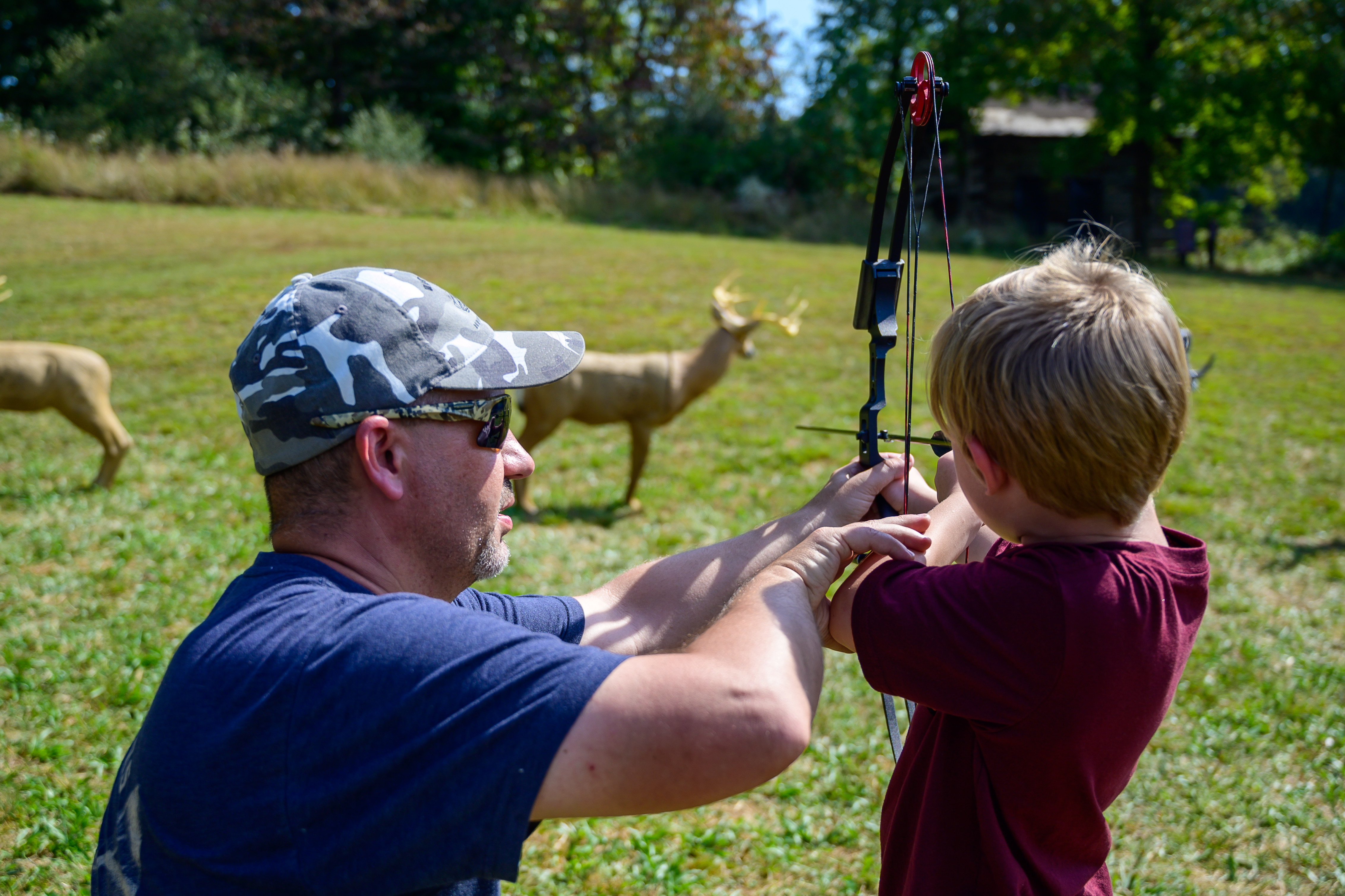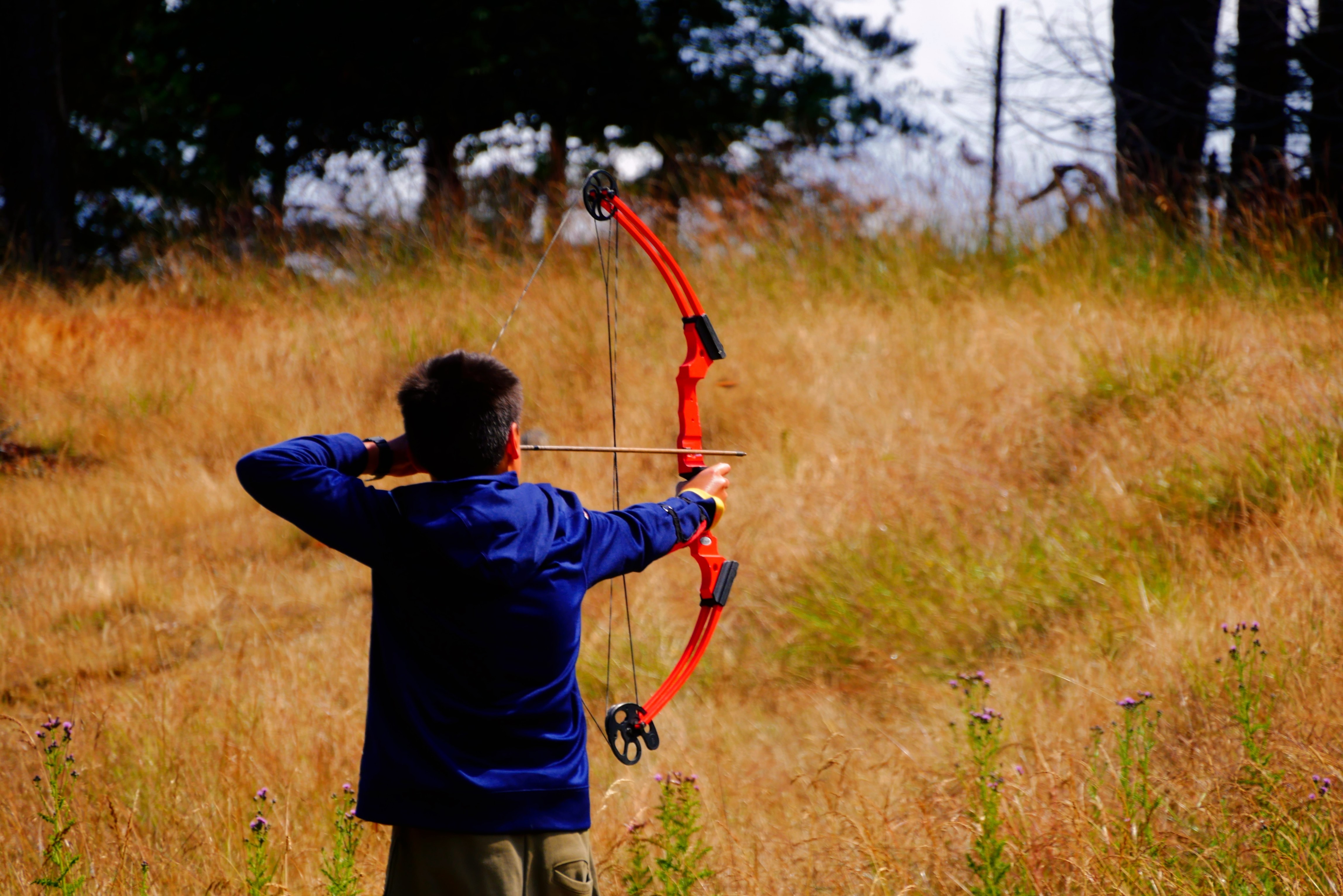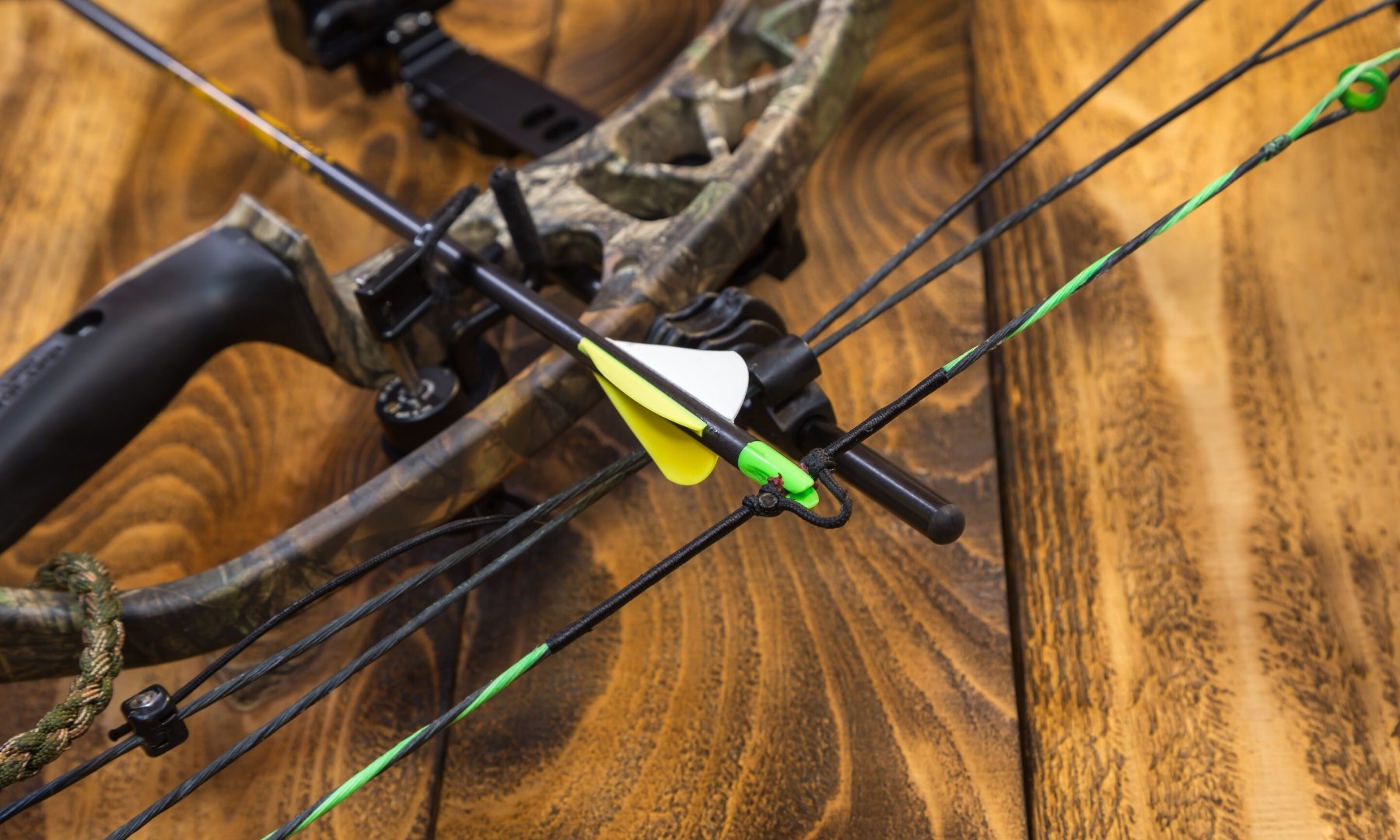When it comes to picking out a compound bow for your kid, there are many options to consider and just as many brands to choose from. But before you make a purchase, make sure you measure your kid’s draw length and determine his or her draw weight by visiting a reputable bow shop. A good bow shop will help you properly fit your kid for a bow. Here’s what you need to know before you go.

Measure draw length
Unlike recurve and longbows, compound bows are engineered to only draw back so far and then stop. This distance is known as the bow’s draw length, which is measured in inches and will help you match your kid with a properly sized bow.
You can determine your kid’s draw length by measuring the distance between his or her outstretched hand and the corner of his or her mouth. To get a proper measurement, use a tape measure and make sure your kid holds his or her hand out to the side and looks at their outstretched hand.
A typical draw length for a kid under 10 is 19-23 inches.
Determine draw weight
The draw weight of a compound bow is the amount of pulling force required to pull back on the bow string and is measured in pounds. Recurve or long bows have incrementally heavier draw weights — the farther back you pull the more difficult it becomes. Draw weights for compound bows are more consistent through the length of the draw. Draw weight is measured near the middle of a bow’s draw cycle, where it’s most difficult and heaviest.
A hunter’s draw weight varies based on body type and can change over time. For instance, a kid that weighs between 70 and 100 pounds probably has a compound bow draw weight of 15-20 pounds. The benefit of visiting a bow shop is testing a bow and making sure your kid gets a bow with a draw weight that is comfortable. The last thing you want for your kid is for them to overreach and struggle with their new bow.
And as you determine your kid’s draw weight, make sure you consider cold-weather shooting conditions. During fall and winter mornings, pulling back on a bow string is more difficult than in warm weather.

Get matching arrows
The first thing you need to consider is whether your kid will use the bow for hunting or for target shooting because different arrows are needed for each. Either way, they need the right arrows. Arrows that don’t fit a bow’s draw length and weight are more difficult to handle and don’t shoot as well. Many bows come with matching arrows, but if you don’t buy a kit make sure you get properly sized arrows. An arrow’s length is measured from the nock to where the field point and shaft meet. When buying arrows, you should also go ahead and purchased a quiver, mechanical release or finger glove and arm protector.
When in doubt, buy an adjustable bow
An adjustable compound bow is a great investment for a youth shooter because draw length and weight can be adjusted over a large range as your kid grows and becomes more skilled. There are many great brands to choose from and your local bow shop will be able to make a recommendation based on what your kid needs.
Once your kid has a bow and matching arrows, they’re ready to start learning how to shoot. The summer months are a great time to practice at a range or in your backyard. Just in time to get ready for the fall hunting seasons!
Want more tips for teaching your kids how to handle and shoot a bow?
Click here to get our 7 tips for introducing kids to shooting sports.




